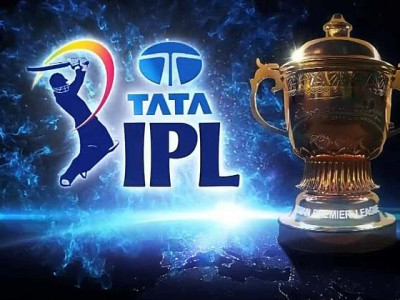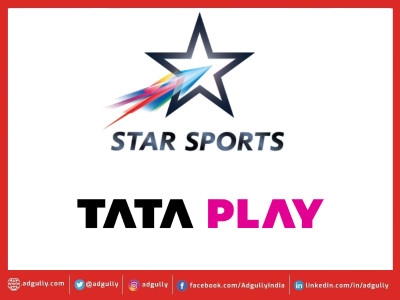With IPL rights in, what should be Star India’s game plan?
With the acquisition of the global media rights of Indian Premier League (IPL) for five years (2018-2022), Star India has become THE destination for cricket. The broadcaster already holds the broadcast rights for ICC and BCCI matches (through 2018).
Adgully spoke to some media and industry experts to know the key implications of this acquisition and what it means in terms of ad rates, viewership, subscription. Is there really a monopoly now as far as cricket broadcast in India is concerned? What should be Star’s game plan now?
Too much monopoly?
With this concentration of cricketing action on Star, there are also apprehensions being raised about the broadcaster being in a monopolistic position. According to Anita Nayyar, CEO - India - South Asia, Havas Media Group, “Whoever has the monopoly tends to dictate. However, the fact is that it is a market place where all of us have to join hands and work together. So, one has to wait and watch to see what kind of strategy Star will adopt in terms of pricing, and also, at the same time the pricing cannot be out of the market reach.”
On the other hand, Ashish Bhasin, Chairman and CEO of Dentsu Aegis Network South Asia, felt that there is nothing like too much concentration as far as the viewers are concerned. “If someone wants to watch the match, they are not bothered about the channel on which it is coming,” he pointed out.
Agreeing with Nayyar on market forces holding firm, Bhasin said, “Ad rates are always dictated by market forces and not by any channel or agency. It’s a demand and supply function. Market forces are more likely to influence the ad rates of any property rather than any one particular channel or client.”
Well-known sports presenter Charu Sharma remarked, “Some may criticise this exclusivity for Star, but I think, given that India is still young in handling its commercials for sporting events, it is better to deal with one organisation. It will certainly be more manageable for the Board, and it is virtually impossible to have any clash of any sort, between the different properties that were up for sale for 5 years. Once our market becomes more stable and professional, it may be prudent to maximise revenues through different players for various rights.”
He further said, “While there may have been temptation to award to the highest bidders in each category, for now it makes more sense to award them to a single bidder-as long as the BCCI is not losing out cumulatively.”
Vinit Karnik, Business Head, ESP Properties, on the other hand, felt that it was very early to comment on this topic. However, he added that potentially cricket would command a higher price, but predicating the numbers at this stage might be premature.
The break-even factor
Speaking further on the high cost – Rs 16,347.50 crore, to be precise – of acquiring the IPL media rights Nayyar remarked that like every coin has two sides, there are certain sets of advantages and disadvantages. “Star, of course, has to cover up a lot of ground to make profits in the coming five years,” she added.
This view is echoed by Charu Sharma, who said, “Everyone must wonder how Star are going to break even, leave alone make any money in these 5 years. Well, the numbers they have offered have not been thrown on the table without adequate crunching. It is going to be a very uphill, but enjoyable task...to plan and execute innovative ways of gathering revenue. Are brands ready to spend more on sport? The recent team/ title sponsorships by Vivo are a pretty good indication that they perhaps are.”
In the Indian context, perhaps these figures are very large. But we have to remember that Star is a global organisation, and the thought processes, or perspectives are also from a global platform. In that sense, even if Star does not break even in the next 5 years, they would have ownership of one of the world’s most exciting sporting properties, for a final deficit figure, which seen from a global business perspective, is going to be well worth the sports media leadership in our part of the world.
According to Bhasin, besides IPL, Star also has other cricket properties that are in demand, which will help them penetrate deeper and get more money out of the subscription revenue. This will increase their subscription revenue substantially, he felt.
Ad rates, viewership, subscription revenues...
Cricket has an evergreen draw in India, and particularly IPL is unique because it’s the only format where it gets women and family viewership. Earlier, sports used to get only male viewership, but now it has got the entire demographic range and that’s the reason why it’s so much in demand, which is automatically driving the marketing, but there is a limit to which it can accelerate. Such big events have several other benefits for the channel, like lot of subscription revenue can enter in. On other hand, it can also help in lifting the bouquet of channels and sometimes you can cross promote channels or packages.
According to Bhasin, it would be narrow to look upon only the advertising revenue, because advertising rates can grow up to a certain level and he felt that it would be a maximum of 10-20 per cent over the next two years. Apart from this, there will be several other benefits for Star, he added.
Nayyar noted, “Even when IPL was been broadcast by Sony, the pricing factor kept on increasing every year, because the acquisition cost is very high and if any network has to make profit, then it is obvious to keep the pricing factor high. But today, the most important part is to consider the kind of incremental price that the market can absorb and the pricing should not be beyond the limits.”
The network gets their revenue from distribution scale and they also make revenue from digitisation to get their hold on the overall revenue.
IPL has had a very loyal viewership base. “The network does not really matter, the viewership is attracted by the event itself. But at the same time Star will have a lot of play in terms of the way they will package as they do have a lot of cricket and non-cricket sports content,” Nayyar added.
Along similar lines, Bhasin believed that ratings and viewership might go up because more people watch cricket. People are now more active on television and are highly interested in IPL. And they would watch irrespective of the channel it is aired on.





















Share
Facebook
YouTube
Tweet
Twitter
LinkedIn